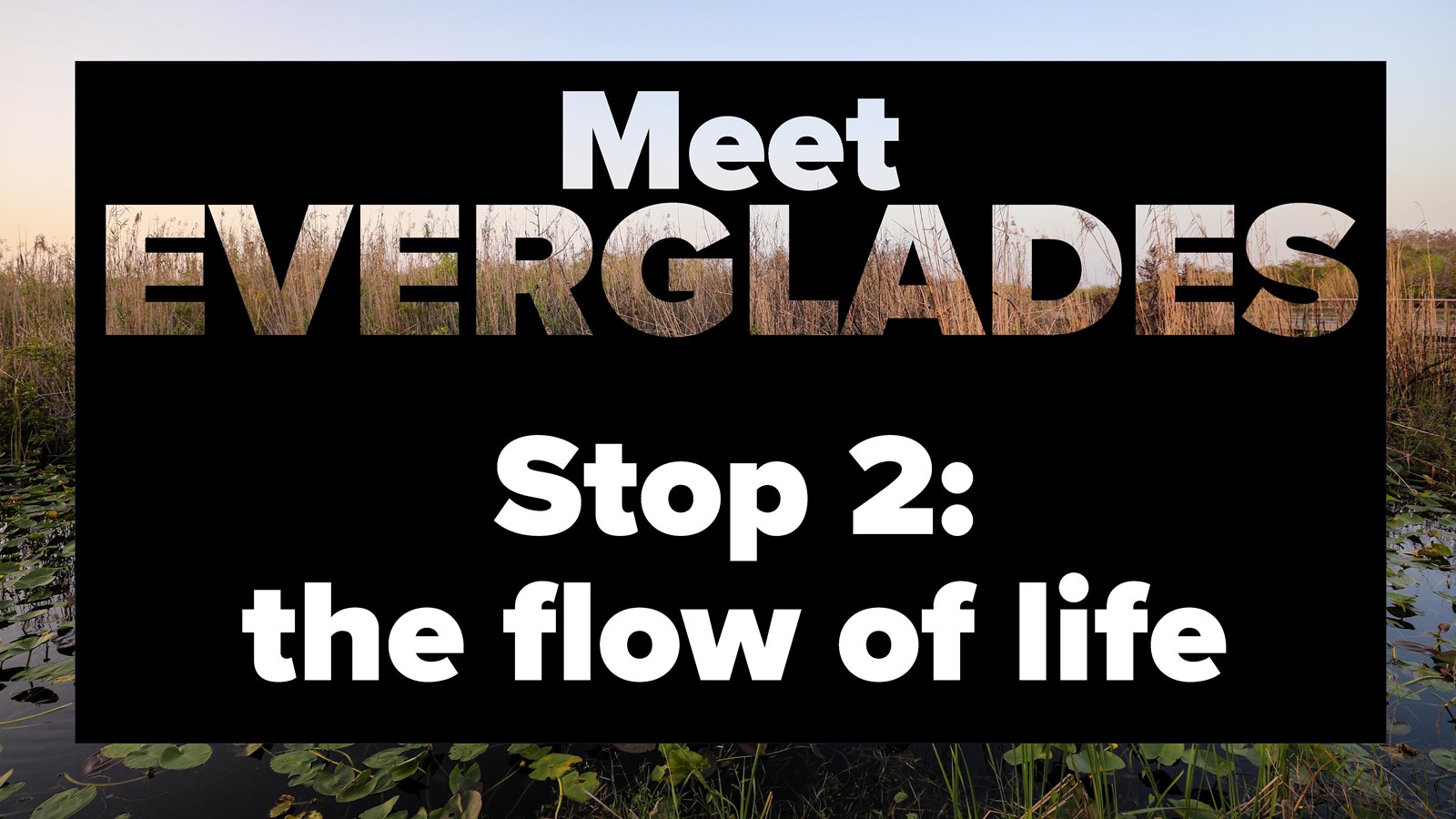Last updated: June 10, 2025
Place
Meet Everglades Stop 2 - The Flow Of Life

NPS Graphic
Stop 2: The Flow of Life
[Ambient sound: wind rustling, subtle trickling water]
Take a moment here at the bridge. Look down below.
Depending on when you visit, the scene beneath you might change completely. In the dry winter season, the water may be still—or gone altogether. But in the peak of summer, you might find a strong stream flowing, alive with movement and sound, channeling and draining the prairie to your north through a stream to your south.
In the last stop, we discussed how the climate and geology of South Florida create the foundation for this unique place. Now, let’s build on that and talk about something called the hydroperiods—the seasonal rhythm of water rising and falling in the Everglades and what it means.
[water sounds]
Let’s return to that image of the tilted table with Lake Okeechobee as the plate. During the summer rains, the “river of grass” overflows its shallow banks. This wide, slow-moving sheet of water—the defining feature of the Everglades—comes to life.
In summer, this river can flow at up to one mile (or 1.6 kilometers) per DAY, spreading across the landscape in a vast, shallow current that can grow more than 30 miles (almost 50 kilometers) wide. In winter, that same flow slows to just 100 feet (over 30 meters) a day. Barely moving—but still flowing.
As the wet season expands the river, it also spreads out nutrients. But here’s the surprising thing: more water doesn't mean more food, in fact it has the opposite effect.
[Soft fade-in: gentle rainfall sound]
When water is everywhere, food gets diluted. The Everglades becomes oligotrophic—nutrient-poor—like adding too much water to your soup. The nutrients and noodles are there, but they’re spread thin for the amount of water in your bowl.
Still, this wet period is essential. It allows periphyton fields to grow. Periphyton is a fascinating, spongey layer of a symbiotic organism composed of blue-green algae, green algae, and microscopic organisms that form mats across the sediment of the bottom of shallow pools and grows around grasses – covering every exposed surface.
It may not look like much, but it’s the base of the Everglades food web. Tiny creatures like glass shrimp, insects, and small fish thrive on it—and in turn, feed the larger animals.
As summer fades and the rains stop, something magical happens.
The river of the Everglades never stops flowing, but now, without the daily rainstorms the water begins to slowly drain off the landscape. The vast sheet of water recedes. The banks of this enormous river begin to collapse inward, funneling the water—and all the life it carries—into the more narrow channels of the sloughs.
That 30-mile-wide river may narrow to just a few miles, concentrating all those insects, fish, and nutrients. It’s as if the watery soup has been simmered down, a reduction, concentrated. Now there are more noodles, carrots, and onions per spoonful—more food in every drop.
[Pause for effect, maybe some kind of faint background music]
This is when the Everglades transforms from a land of famine into a land of feast.
The nutrient gradient shifts. The sloughs, once nutrient-poor, become nutrient-rich highways teeming with life. And this is the key: that seasonal pulse of abundance is what draws the incredible wildlife of the Everglades in the winter – in the dry season.
So while summer may be the season of rain, winter is the season of survival—and opportunity.
[Soft fade-out of trickling water, light bird calls begin]
At our next stop, we’ll meet some of the animals that depend on this incredible cycle—and explore how they’ve adapted to live in a world where water writes the rules.
